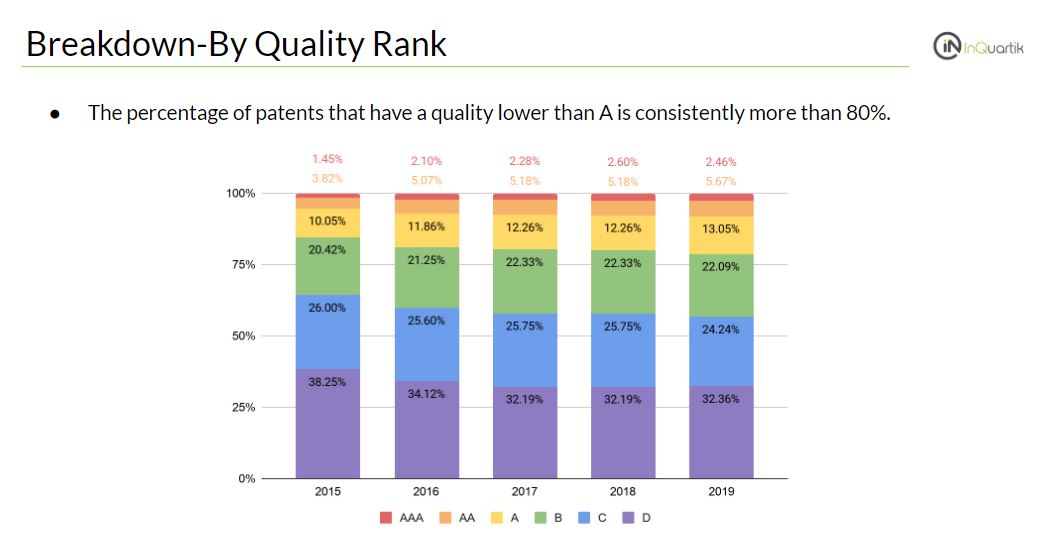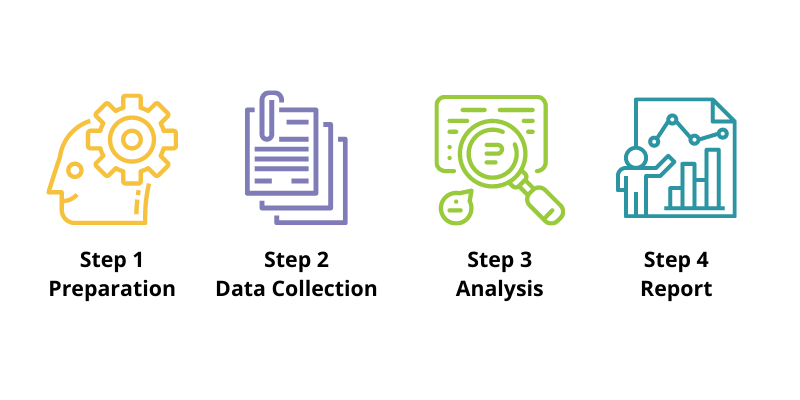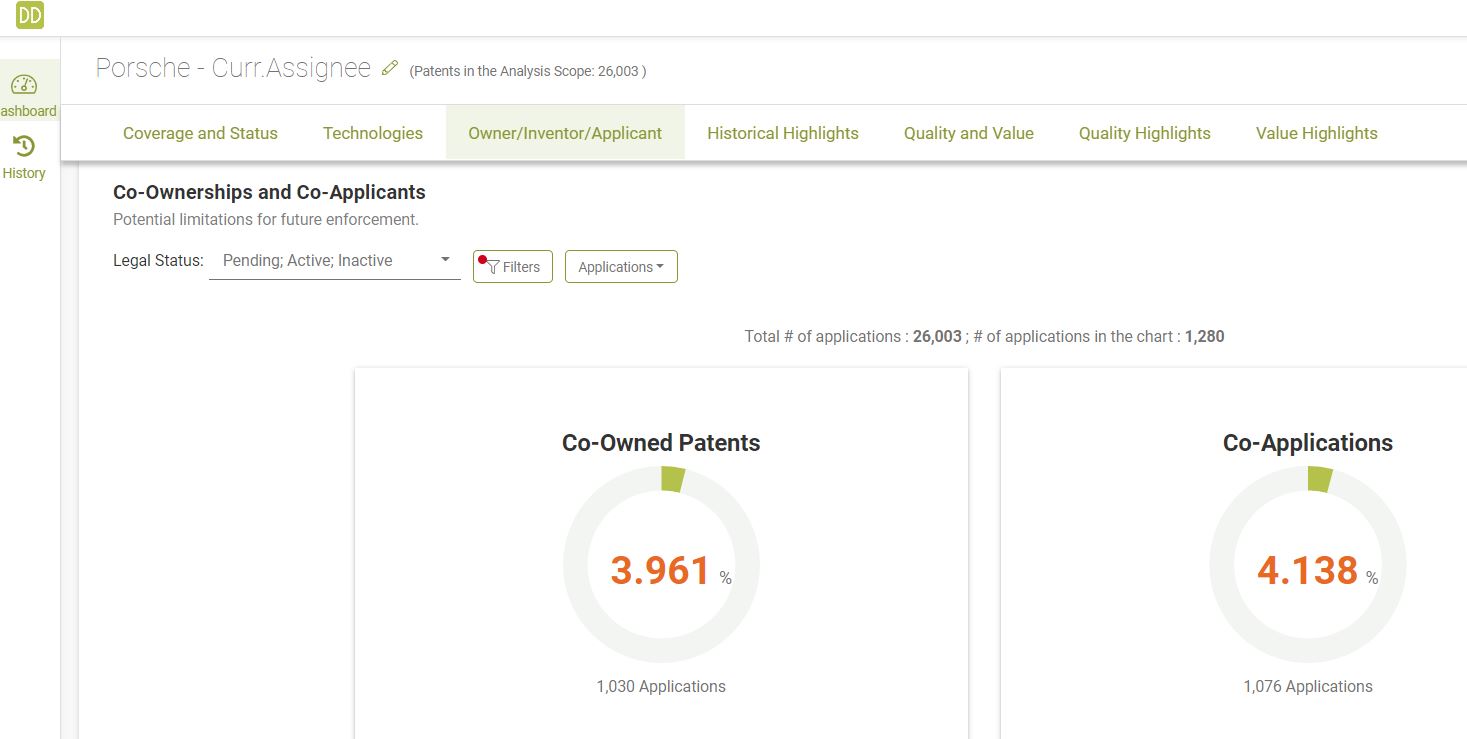Table of contents
- What is due diligence?
- Patent due diligence is IMPORTANT
- Applications of patent due diligence
- The process of patent due diligence review
- The challenge faced in due diligence
- Helpful tools
What is due diligence?
“Due diligence” is a common legal and business term that refers to a “careful and reasonable investigation. It was originally a general term, “to do something with required carefulness,” but was later written into the U.S. Securities Act of 1933 requiring broker-dealers to conduct due diligence in disclosing information to investors.
Think of due diligence this way: you want to invest in real estate. After walking through a house a few times, you purchased it and later discovered that the walls had termites and there was mold in the ceilings. Had a proper pre-purchase inspection (due diligence) been done, you wouldn’t have your hands tied to this piece of property that may cost you more to repair.
Patent due diligence is IMPORTANT
“ Scientia potentia est — Knowledge is power”
– Sir Francis Bacon
A well-known example of IP due diligence, or insufficient diligence, in this case, would be the Rolls-Royce Motors example. In 1998, when Rolls-Royce Motors decided to sell, Volkswagen outbid the competitor, BMW, and bought the company, factories, and some mascots for £430 million. However, Volkswagen was unaware that the deal did not include the Rolls-Royce name and logo until after the transaction. In the meantime, the rights to license the name and logo were sold to BMW for £40 million, leading to a dispute over the overlapping branding. This resulted in an agreement that Volkswagen could use the Rolls Royce name and logo for only five years — a great misjudgment that could have possibly been avoided with proper due diligence.
Another possibility would be acquiring a large but useless patent portfolio. InQuartik’s most recent 2021 report shows that nearly 80% of all U.S. patents have a quality ranking below A. This means that the chances of obtaining worthless patents are high, extremely high. The money involved is incomparable to purchasing, for example, a car or a smartphone. We are talking thousands or millions of dollars! For something that may be useless and hard to resell.

We can see that patent-related issues are quite sensitive because of the high stakes that come with any IP-related proceeding in business as we see in the example above and many infringement litigations. Meaning that any patent issue should be approached with great scrutiny.
Applications of patent due diligence
Due diligence can be conducted at any time during a patent’s lifecycle, depending on the purpose of the due diligence review. Below are some more common applications for patent due diligence:
- Before filing a patent application
Due diligence reviews at this stage are used to search and analyze prior art references prior to filing a patent application, sometimes as early as before the actual design of an invention. - Upon receiving a notice letter or a cease and desist letter
Receiving a notice letter or a cease and desist letter on infringement, the first thing to do is to gather information, the more the better. Due diligence would be essential to you and your attorney in determining whether the accusation has merit and for forming strategies. This would be the most time-sensitive scenario, as cease and desist letters stipulate a time frame (usually 10 ~ 15 days) for you to stop the infringement. - Transactions
Due diligence is a must for any patent-related transactions, whether it be for monetization (acquisition, licensing, pledging, etc.), M&A, raising external investment capital, or preparing for an initial public offering. Transaction related due diligence is an overwhelming and daunting task that includes people from various fields of expertise and much time and money. - As a fallback
Patent due diligence can also be done for contingency or strategic reasons. Perhaps you are afraid of being sued for infringement and would like to better understand your patent portfolio’s stance in the industry. Or your business is drafting up a strategic plan to sue another company for infringement. Either way, a thorough investigation will let you know how to proceed.
The process of patent due diligence review
The process of a due diligence review is much like any other investigation process and comprises 4 stages: Preparation, Data Collection, Analysis, and Report. However, the issues and items addressed in the review may range from answering a few basic questions to hundreds of questions, depending on the purpose and intended depth of the review. Also, the due diligence review is a fluid process, sometimes you will need to backtrack to a previous stage if anything unclear or new is discovered in stages two or three.

Since due diligence includes quite a lot of information in just the process alone, you can use a due diligence checklist to check your progress, either it is for the entire process or a particular step.
Stage 1. Preparation
Before any can be “done,” there are several things to determine, these include:
- The purpose of this due diligence review
- Cost and scope
What is your business plan? What is your target business? Is it a product or technology? What are the relevant subject matters? Are there any side products with other technology that needs to be considered? What is your budget for the due diligence review? - Objectives
What do you want to know from this due diligence review? Keeping your eye on the goal allows for better efficiency in your work. Here you can start drafting up a due diligence checklist. This checklist may be short, with just the crucial questions, or very long, with all the details listed. - Team members
This item is especially important but often overlooked. A well-done due diligence process normally needs whole teams of professionals involved, not just patent attorneys. Top management, tech professionals, law professionals, patent professionals, etc. all bring crucial information and insights to the table.
Stage 2. Data collection
The main issues in the stage would be to collect and investigate the following:
- The protection status of the target matters
After targeting the subject matters in the first stage, now you will need to determine the protection scope. Which products or technology are patented or pending? After completing this step, you will know the approximate number of patents-at-issue that need to be reviewed. - Ownership
Ownership of the patents-at-issue is crucial as some patents may be jointly owned and will lead to problems if the patent is handled improperly. - Litigation history
Any litigation history of the patents-at-issue needs to be dug up and examined to find hidden litigation issues and prevent future lawsuits. - Other documents
Patent-related documents (if any) to be collected for further examination include (not limited to) licensing agreements, confidentiality agreements, publications, employee assignment agreements, and any internal correspondence.
Stage 3. Analysis
This stage will be the most time-consuming and tedious in the due diligence process. In this stage, you will need to:
- Analyze the patents
This may be the most grueling part of the process. You will need to review the status (active/inactive, licensed or not), the scope of the claims, validity, enforceability, novelty of each and every patent-at-issue. You might want to draft up a separate due diligence checklist for this matter to make sure you review the same items in each patent. - Conduct an FTO search
If you are preparing to acquire or license a patent portfolio for new business plans, an FTO search would be necessary to make sure the patents-at-issue allow for such development. - Pinpoint problems or holes in your findings
Perhaps, you have found that a certain target that should be patented was not filed. Or maybe found another patent family that needs further analysis. Or a certain patent has outstanding maintenance fees. - Draft action items
By now, you will have a much better understanding of the overall status and will know where to go on from here. Action items may include asking the patent owner to pay outstanding maintenance fees or providing additional information. Or perhaps, by now, your team finds that the prospect deal needs to be reexamined or your business strategy needs to be adjusted.
Stage 4. Report
The last stage of conducting due diligence would be to write the report. Although the format may vary for each review, we advise that use your original process checklist as the outline in writing a due diligence report. The common components in a due diligence report comprise of:
- Background and objectives
- Analysis, findings, statistics, charts, interpretations
- A SWOT (Strengths, Weaknesses, Opportunities, and Threats) analysis
When writing a due diligence report, it would be best to consider who the intended readers may be. For instance, the focal points of the CFO and CTO may differ, therefore, it is important to focus on what the reader wants to know.
Please note that this process is only a basic guide to the due diligence process. We strongly suggest that you seek the help of patent professionals with experience in patent transactions or M&A.
The challenge faced in due diligence — too much information

Patent due diligence is a time-consuming and labor-intensive process. The landslide of information is enough to bury any patent professional. A portfolio of patents-at-issue may reach thousands of patents in a single transaction. In 2012, the Apple Consortium sold 4,000 patents to RPX, and in 2016, Microsoft sold 1,500 patents to Xiaomi. Think about how many people had to analyze and go through all the patents for each case!
All this means is that a thorough look at the entire portfolio would be impossible, and the best that could be hoped for was a summary report based on the patents that could be examined, including only basic information such as the patent status and owners.
For better due diligence, here are some key points:
- A quick and general assessment of the situation
You will need to know the scope (number of related patents, file wrappers, prior art, and such), the overall strength of the portfolio, related technologies, etc. quickly at the very beginning. - The focal points
You will need to find the focal point(s) quickly by pinpointing the key patents (high-value patents in both quality and value) for analysis, possible problems such as patents with joint ownership, or patents that were litigated. - Hidden issues
There may be relevant patents or prior art that was not originally found or provided that may have underlying problems. Hidden issues are normally found after careful analysis of an entire patent. Just to think how much time is needed to read through and analyze one patent, and you have 40 more to go!
Helpful tools
In the past, much of the due diligence process was done manually, with patent professionals being required to go over patents individually, often one by one using large folders and mammoth Excel spreadsheets. Yet these laborious efforts often yield nothing more than the most basic of information, meaning that potential buyers or licensees were unable to gain the information they were most interested in.
Fortunately, the process has evolved, thanks to technological developments in AI and big data analytics. With the introduction of new software and patent search tools, patent data can be managed more effectively, and conducting due diligence is now much easier.
Patent intelligence platforms like InQuartik’s Patentcloud, LexisNexis’s PatentSight, CPA Global’s Innography, and Gridlogics’ Patseer help in reducing some of the labor-intensive tasks that were required in the past, enabling patent professionals to work even more efficiently. These products can provide analytics and insights that further aid those involved in patent due diligence.
InQuartik’s Due Diligence is specifically designed for conducting patent due diligence. Analytics of the overall coverage and status to ownership, transaction/litigation histories, quality, and values of up to 50,000 patents can be analyzed and viewed in one report. With this one report, you will now have a quick and general assessment of the situation, the main focal points, and possible hidden issues.

Want to know more? Try out Due Diligence and analyze your own patent portfolios!


